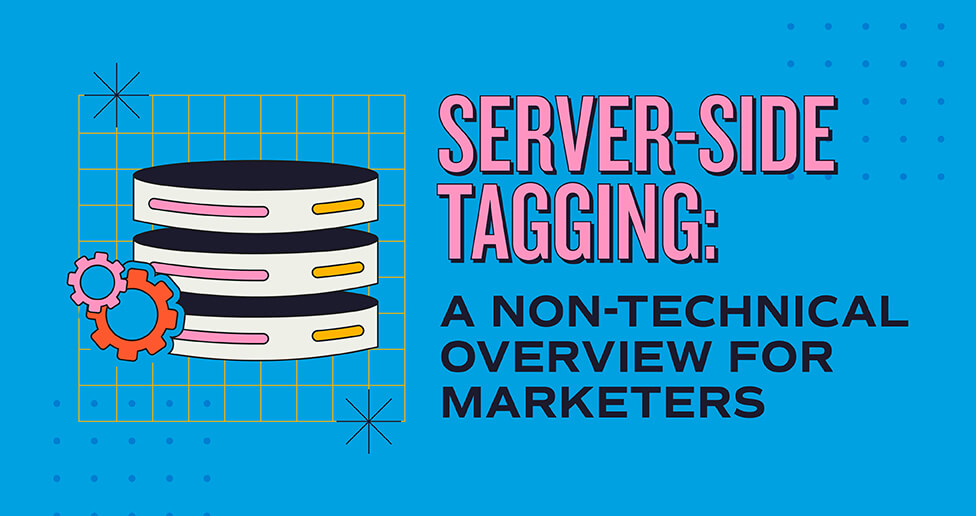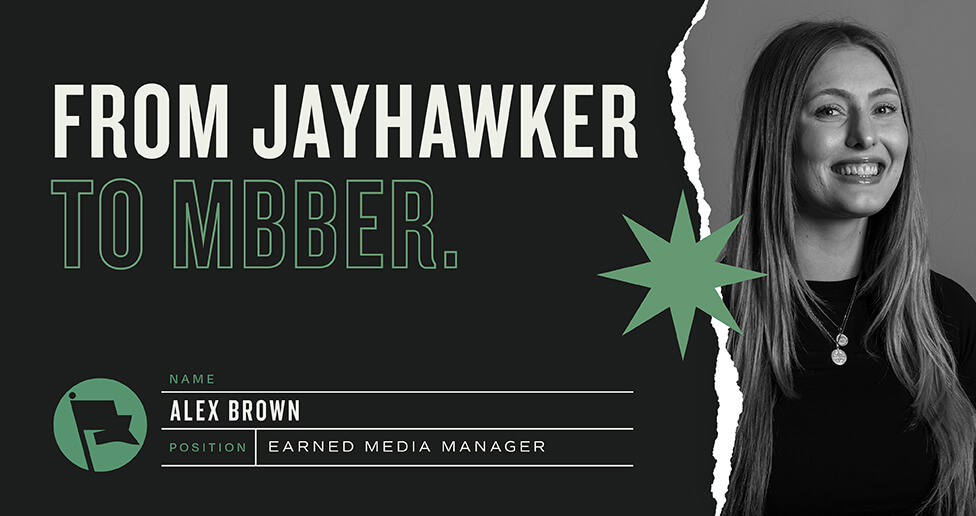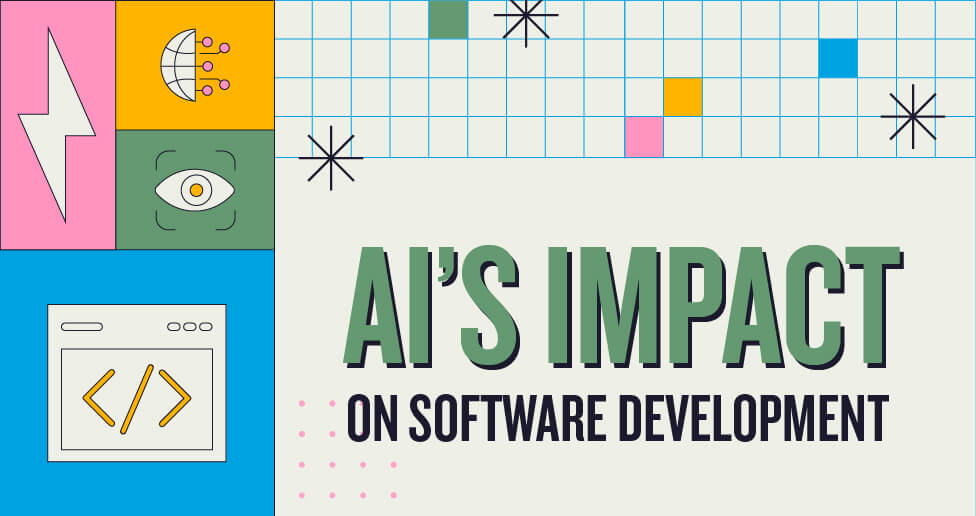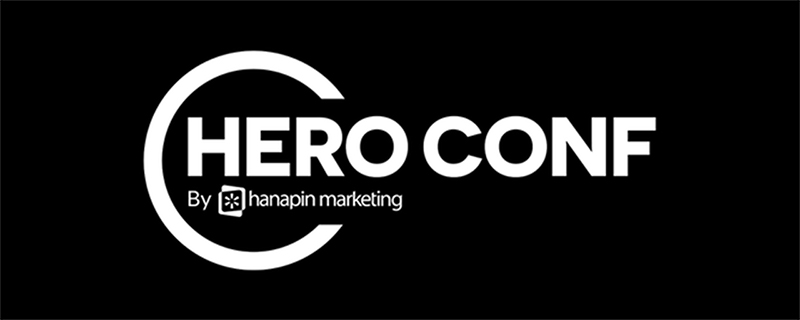
I had the privilege of attending the 2018 Hero Conf in Austin, Texas, one of the world’s largest digital advertising conferences. I was very excited to be in one of my favorite cities surrounded by some of the best pay-per-click marketers. The paid search industry changes fairly rapidly, and it really keeps me on my toes, which is something I love about my career.
With 10 smaller sessions and four keynotes over the course of two days, the conference was jam-packed with tips and takeaways to help MBB’s paid search clients. There were several sessions with new, futuristic ideas (like the one where Alexa basically gave a paid search report), but there were also great sessions reviewing best practices and tips for optimizing campaigns. I noticed a few recurring themes throughout the sessions I attended, and I have gathered my key takeaways from the conference here.
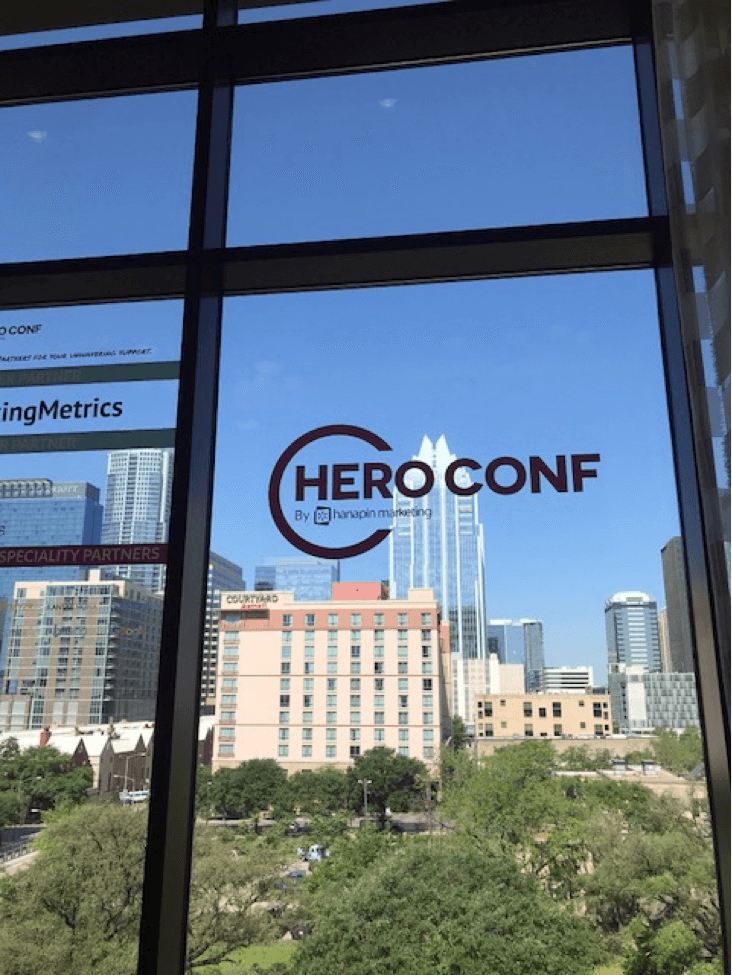
Use data in every decision.
Many speakers discussed the importance of using data when drawing conclusions and making optimizations. Nearly all digital marketers do use performance data when making updates, though it is easy to assume things about an audience. Addressing our tendency to make assumptions, the speakers encouraged looking past demographics to create personas for an audience. Where do they hang out online? What influences them to make a purchase? What solutions can we provide before they even start looking for a solution?
While creating personas is definitely not a revolutionary concept in advertising, we do have much more data than we have had in the past. Search query data can provide so many insights about where users are at in the sales funnel and what types of content they’re seeking. Once you understand your audience and their behaviors, it’s essential to tailor your message directly to this audience.
As Brad Geddes of AdAlysis shared, we should always strive to serve the correct ad to the correct person at the correct time.
Optimize for voice search.
We’ve talked about voice search a couple of times on the MBB blog (Voice Search for CPG and 2018 SEO Predictions), but it continues to remain a hot topic in the PPC community. Rightfully so, as it’s estimated that 30-50% of all searches will come from voice commands by 2020 (source).
At this time, there is no way to advertise on voice search devices. However, brands can still use this platform to grow their reach. Shonna Morse of Empower MediaMarketing shared a few examples of brands taking advantage of voice search opportunities. Several food product brands have worked with partners like Meredith and AllRecipes to include brand names for ingredients in recipes, which are a frequent ask of voice search devices. Companies like Starbucks and Lyft have partnered with Amazon Alexa to create Alexa Skills to allow their customers ask for a ride or order a coffee on the go.
Additionally, while Google Home does not advertise on the speaker itself, it will show AdWords ads when a search is sent to a phone. There are also many people who use these types of devices to listen to a streaming radio service like Spotify or Pandora, which companies can purchase advertising with. Depending on your industry, it is still possible to advertise with voice search devices, just not in the traditional sense (as of yet!).
Morse also discussed the importance of optimizing for voice search organically. She recommending spending more time on local listings, building out FAQ pages, focusing on position 0, paying attention to customer reviews, and implementing SEO best practices (like submitting sitemaps to search engines, optimizing for mobile, etc.).
Always test new things.
Several speakers discussed the importance of creating and testing ad copy for your audience. Merry Morud of Aimclear presented on testing ad copy based on her experience working with Uber. She began by sharing that no matter what channel or industry you work in, the most common ask is more for less. It’s important to optimize the “basics” for every paid search campaign, testing variables like delivery, placements, bidding, budget, and targeting. Morud recommends nailing campaign bidding and optimization prior to testing out ad copy.
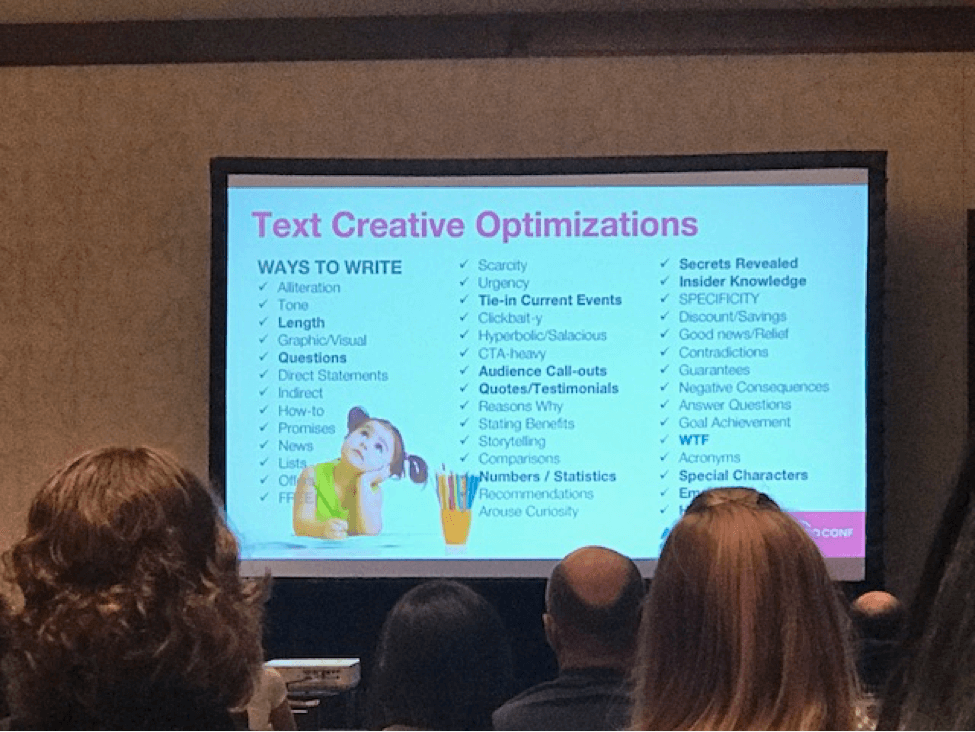
Mary Hartman of Hanapin Marketing also gave an informative session about crafting ad copy. She recommended structuring accounts and tailoring ad copy based on where users are at in the sales funnel, which can be determined by the keywords you’re bidding on.
Ultimately, there’s always room for creative improvement in advertising – on any channel. Morud provided an almost endless number of examples for ways to test ad copy: length, tone, urgency, storytelling, statistics, discounts, contradictions, questions, acronyms, and special characters… just to name a few. She also shared the importance of testing one variation at a time, which allows you to truly understand the results of your test.
Morud recommended creating a learning library to keep track of all tests and conclusions drawn to ensure you’re being efficient in your testing. This also makes it easy for other people on your team to understand what tests have already been conducted. Once you’ve drawn conclusions from testing, these insights should also be used to test creative in other channels.
Pay attention to search on other channels.
Over time, more and more users are going directly to sites (or apps) like Amazon, Pinterest, and YouTube to seek out different types of content, rather than search engines. Like traditional search engine marketing, these platforms allow bidding on keywords. However, people aren’t searching on these sites the same way they would in a search engine. This requires PPC marketers to approach each channel uniquely, each with its own set of advantages and disadvantages.
There are over 2.5 billion keyword searches and over 300 million visual searches performed on Pinterest every month, according to Michael Akkerman, Head of Pinterest Marketing Partners. People use Pinterest because it’s personal, visual, and inspiring. Users seek out content to enrich their lives — recipes to try, inspiration for their home, places to visit. Akkerman encourages brands to add value to this experience by targeting the right audience and providing a solution. In my experience, Pinterest is a great tool for a top of the funnel approach to increase brand awareness.
Adversely, users on Amazon are looking to buy. I attended several sessions about Amazon, as these closely relate with MBB’s client base. Nancy-Lee McLaughlin of CPC Strategy explained the difference between seller and vendor levels, as well as Headline Search ads, Sponsored Product ads, and Product Display ads. If you’re new to Amazon advertising, McLaughlin recommends starting with Sponsored Products, as these generally see the best return on investment.
Overall, I learned a lot at Hero Conf and came back feeling refreshed and inspired. The speakers provided a lot of actionable insights and I’m really excited to try out new tactics to help improve results for our clients!
Subscribe to our newsletter
Get our insights and perspectives delivered to your inbox.
